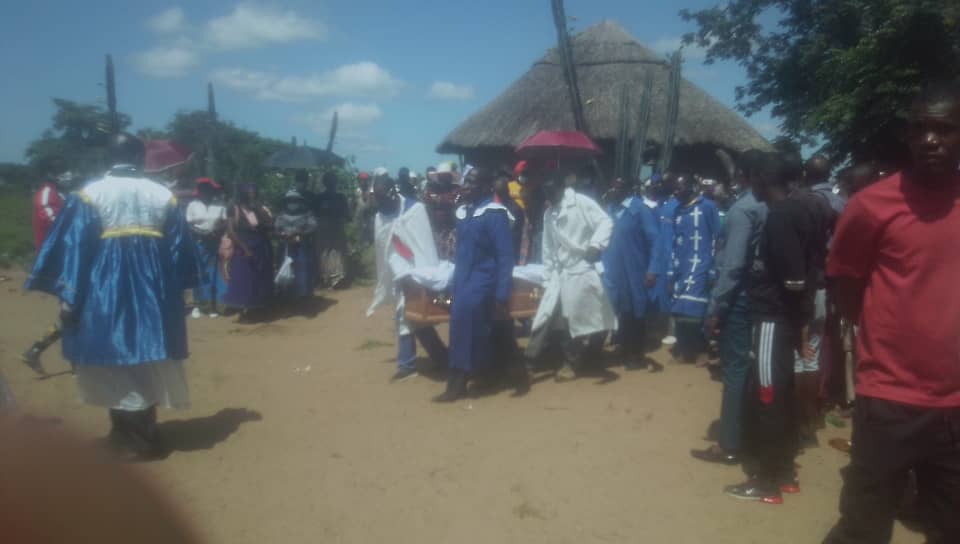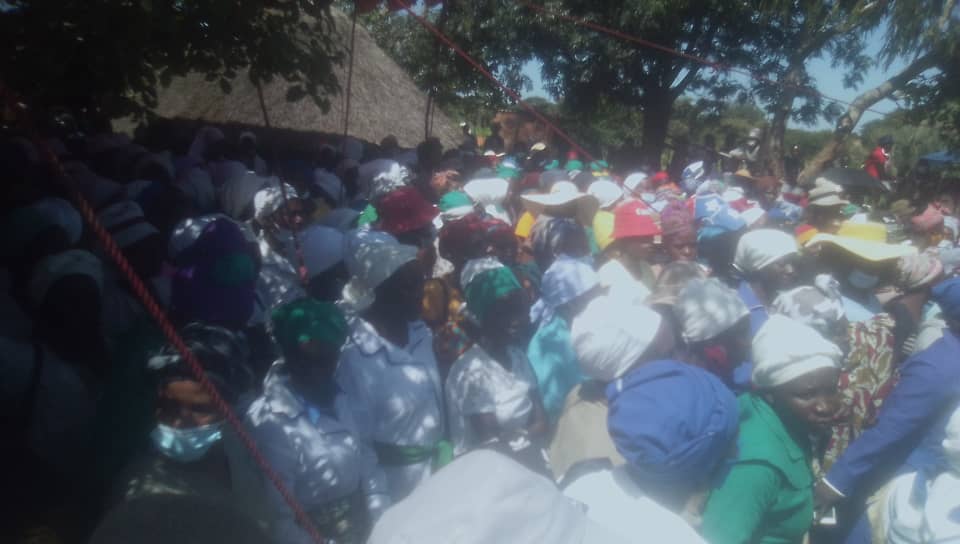BY ISAAC NTULI
A prominent Victoria Falls church leader died under mysterious circumstances after he allegedly went outside his bedroom after being called by unidentified people in the middle of the night.
Amukela Nyathi from Lupinyu Village near the Victoria Falls International Airport died at his homestead early this month, leaving the community dumbfounded.

Pall bearers carrying Prophet Nyathi’s coffin at his homestead
Nyathi, who was 46 at the time of his death, was a popular self-proclaimed prophet and founder of the United African Apostolic Church.
A family member who requested to remain anonymous said the prophet, popularly known as Amukela, woke up in the middle of the night saying a voice was instructing to go outside.
“We understand that he complied and when he came back, his family members heard him knocking loudly on the door,” he said.
“They found him weak and frothing at the mouth. He was crawling and struggling to breathe.”
Nyathi was rushed to Victoria Falls Hospital, which is located about 19 kilometres from his homestead, but he was pronounced dead on arrival.

Hundreds of people attended the prophet’s burial
Hwange West Member of Parliament Godfrey Dube told mourners at the funeral that Nyathi had made a huge contribution in development projects around Hwange district.
“I am saddened to be witnessing the passing on of a man I spoke to recently,” Dube said.
“He was a man who helped many spiritually, but we have to accept it.”
United African Apostolic Church’s bishop for Hwange Pastor Albert Ndlovu said their church, founded by Nyathi, transformed many lives spiritually.
He said the prophet had the powers to heal the sick and helped barren women to conceive.
“The church has lost a hero of faith, and the community, someone who brought families together,” Ndlovu said.
“Many homes stand today because of Prophet Nyathi’s prayers and many barren wombs gave birth to children because of his ministering.
“Many people got freed from oppressive spirits because of his prayers and is the reason why I call him a community builder.”
Chidobe Ward 2 councillor Shakani Mukoma echoed similar sentiments, saying the Victoria Falls community had lost a spiritual leader.
“The community has lost a community developer who was always ready to serve his community whenever a new one arose.”
Nyathi rose to fame after ‘healing’ well known politicians, government officials and general citizens who came from as far as Harare to camp at his homestead
Locally, he was popular in rural settlements such as Matetsi,Chikandakubi, Kachechete and Nemanhanga among other communities.
Nyathi is survived by seven children.

 Slider3 years ago
Slider3 years ago
 National4 years ago
National4 years ago
 Tourism and Environment4 years ago
Tourism and Environment4 years ago
 Opinion4 years ago
Opinion4 years ago
 Special reports4 years ago
Special reports4 years ago
 National4 years ago
National4 years ago
 National3 years ago
National3 years ago
 National3 years ago
National3 years ago





